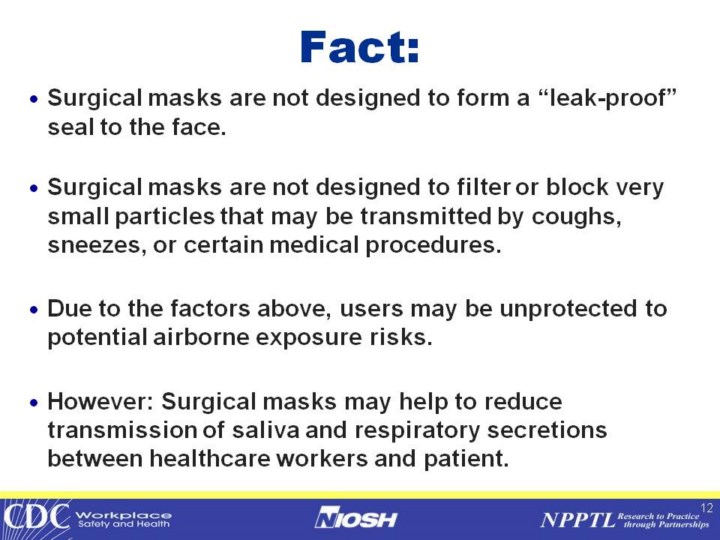| front |1 |2 |3 |4 |5 |6 |7 |8 |9 |10 |11 |12 |13 |14 |15 |16 |17 |18 |19 |20 |21 |22 |23 |24 |25 |26 |27 |28 |29 |30 |31 |32 |33 |34 |35 |36 |37 |38 |review |
 |
Myth: Respirators and Surgical Masks provide the same type and level of protection for the wearer. Sub-myth: Everybody already knows that there's a difference!
Fact: Many people still do not realize that surgical masks and N95 respirators are designed to provide different types of protection and that these two types of PPE undergo different types of testing. Surgical masks are not designed to provide a leak-proof seal against the face. They are also not designed to protect against smaller particles. They are meant to protect against the larger, droplet particles. Due to these facts, surgical masks are not meant to protect users from potential airborne exposure risks. N95 respirators, on the other hand, are designed to create a seal against the user's face, which should be confirmed upon every use through a user seal check. The filter is designed to protect the wearer from various sized particles and therefore protects against airborne exposure risks. Surgical masks do, of course, have a use and are beneficial. Surgical masks are meant to reduce the transmission of saliva and respiratory secretions between healthcare workers and their patients. There are instances where N95 respirators have been tested and approved as surgical masks - these respirators have undergone both NIOSH testing as well as FDA testing and have been approved as both an N95 respirator as well as a surgical mask. These types of respirators are called Surgical N95 respirators |